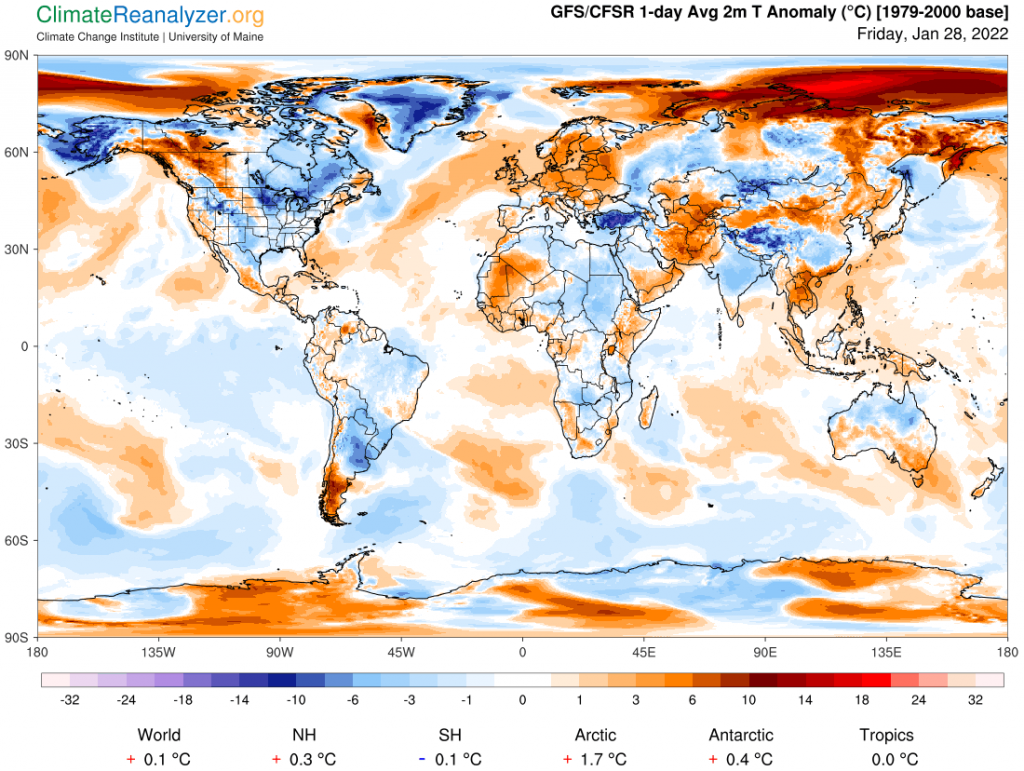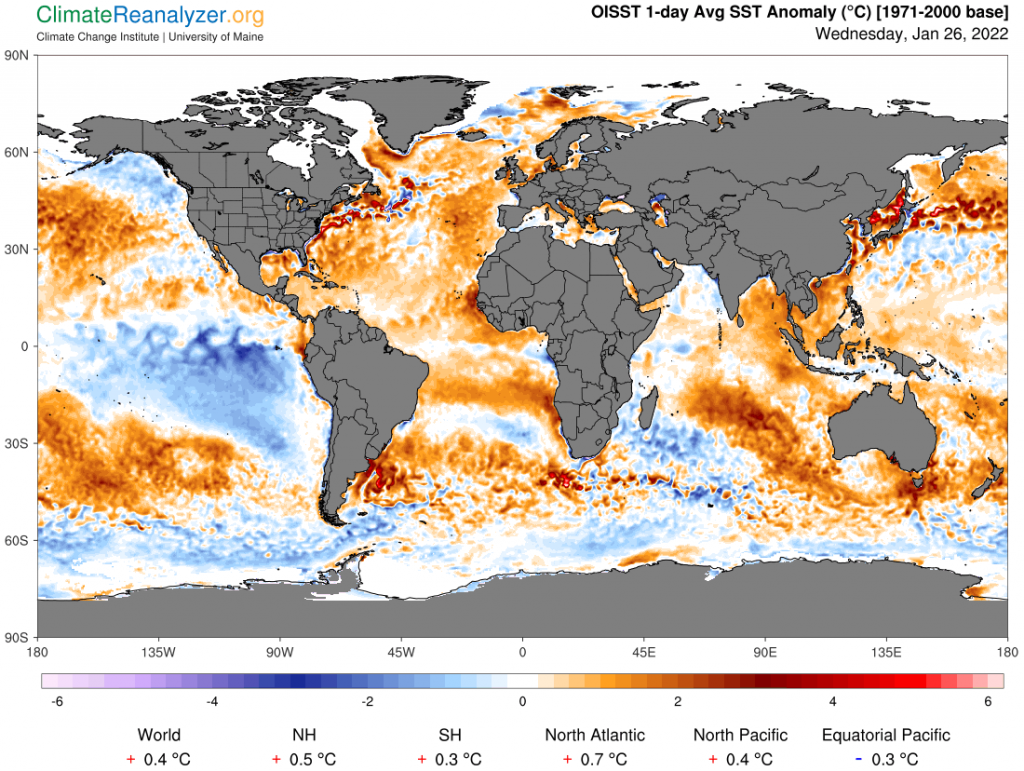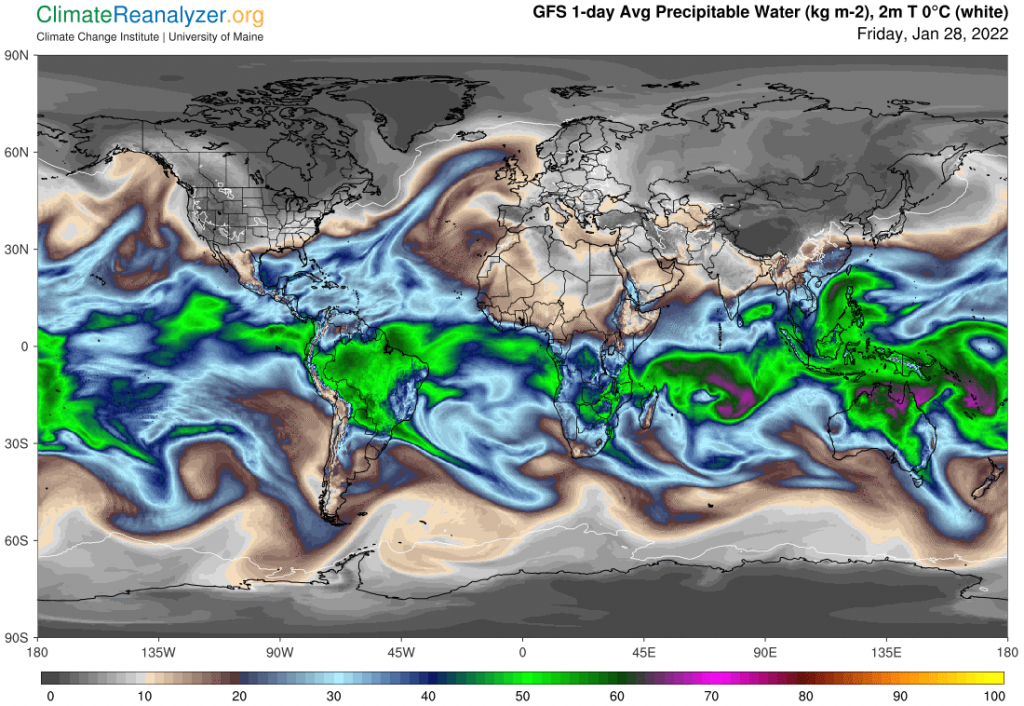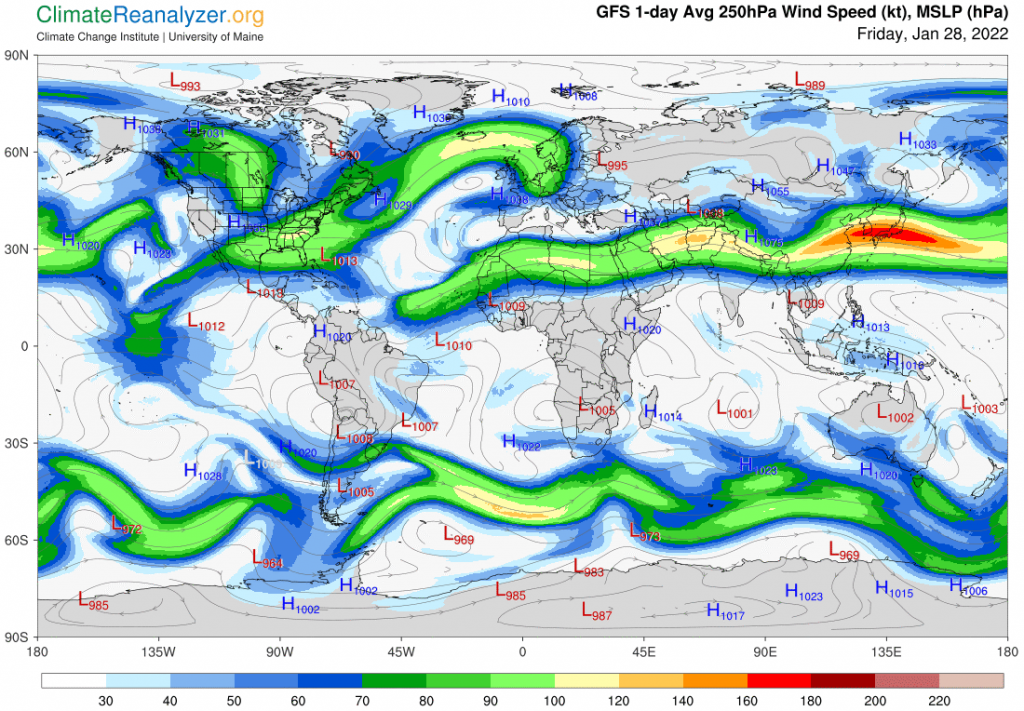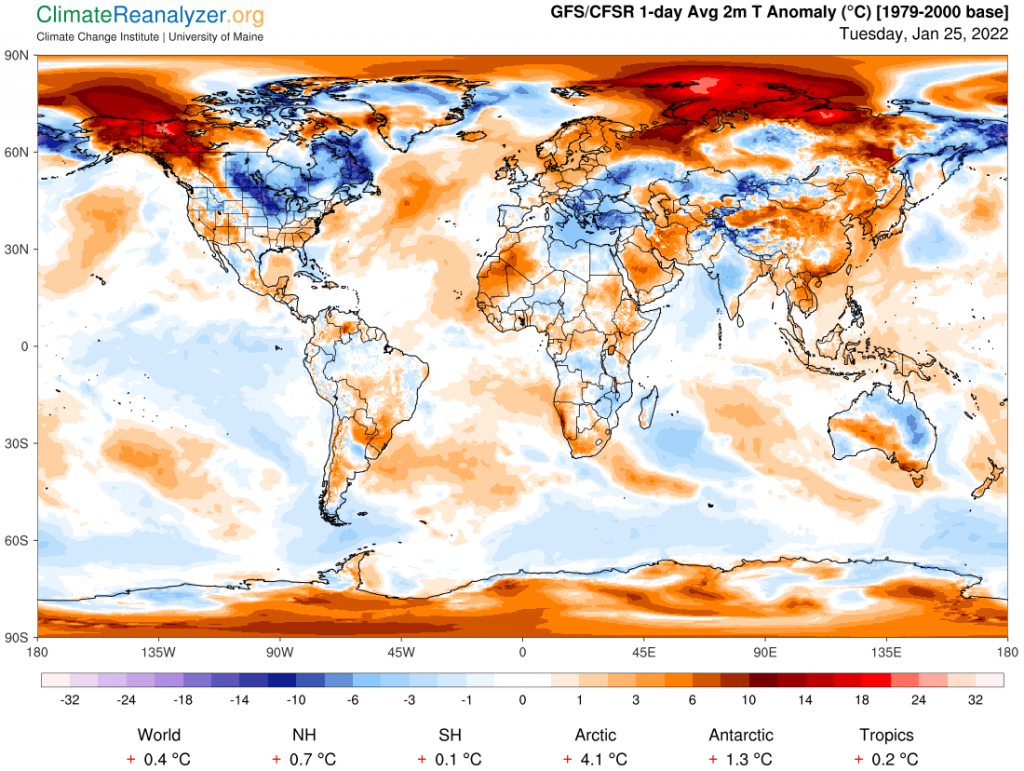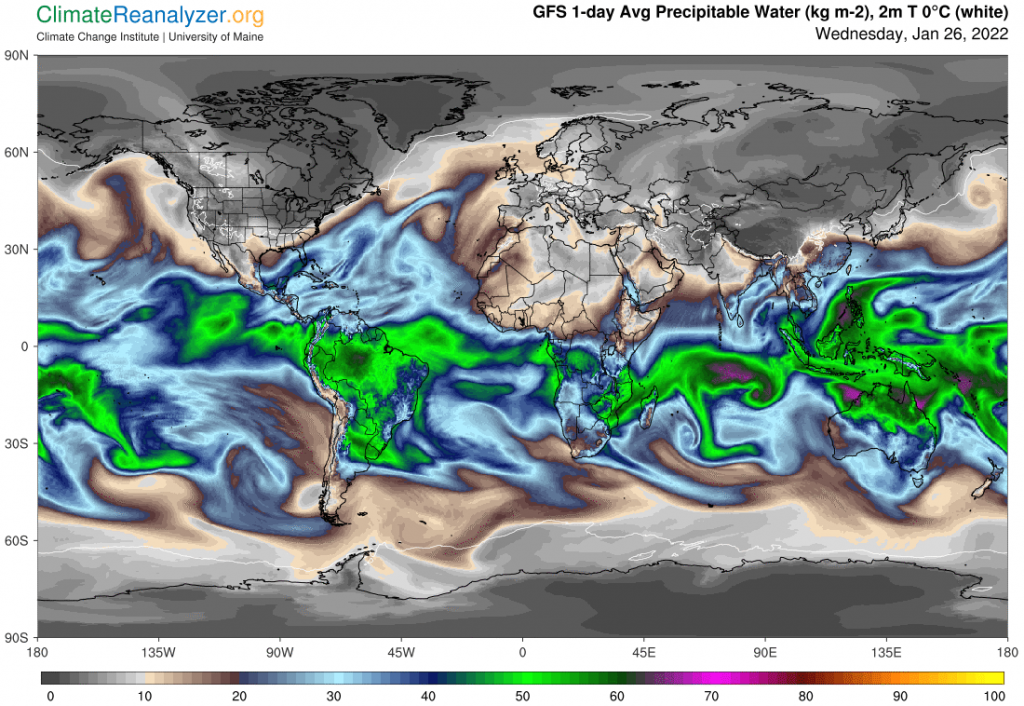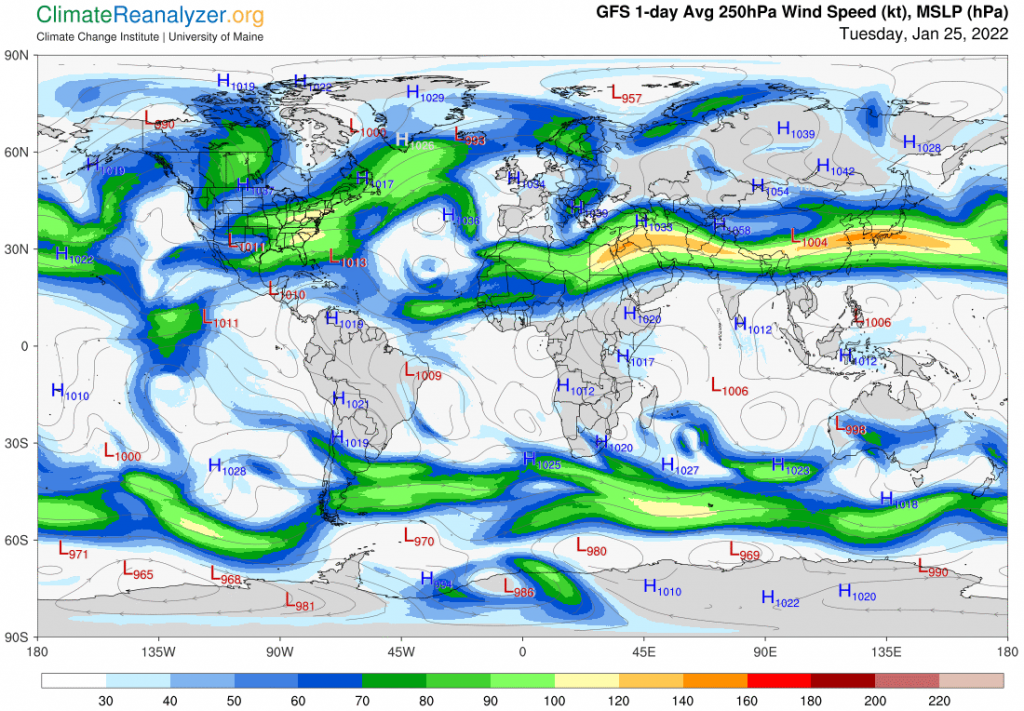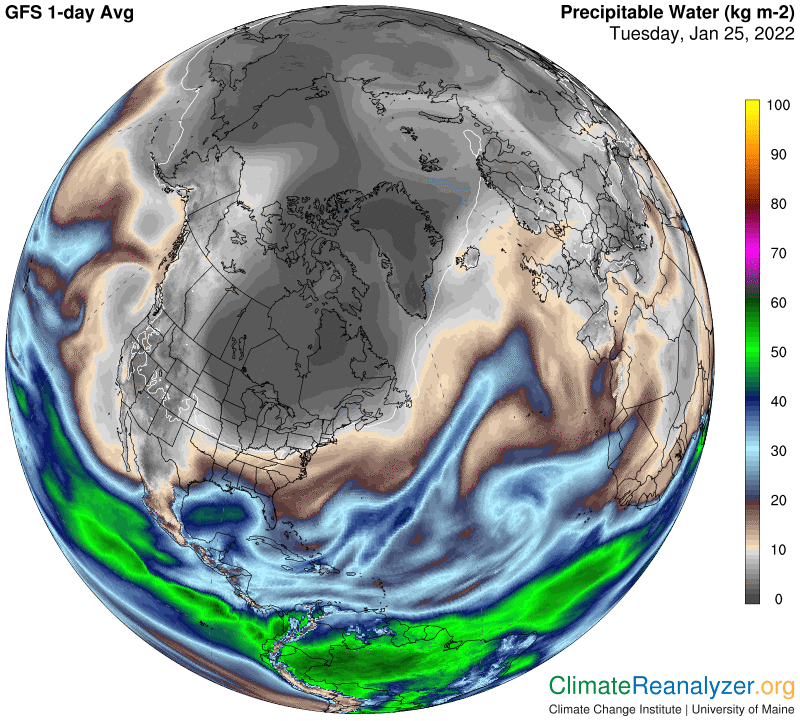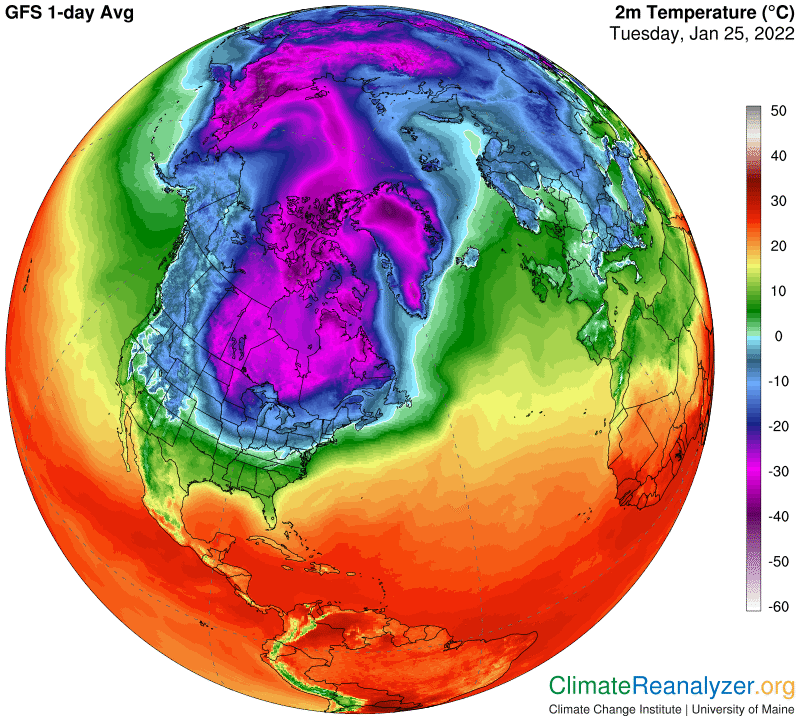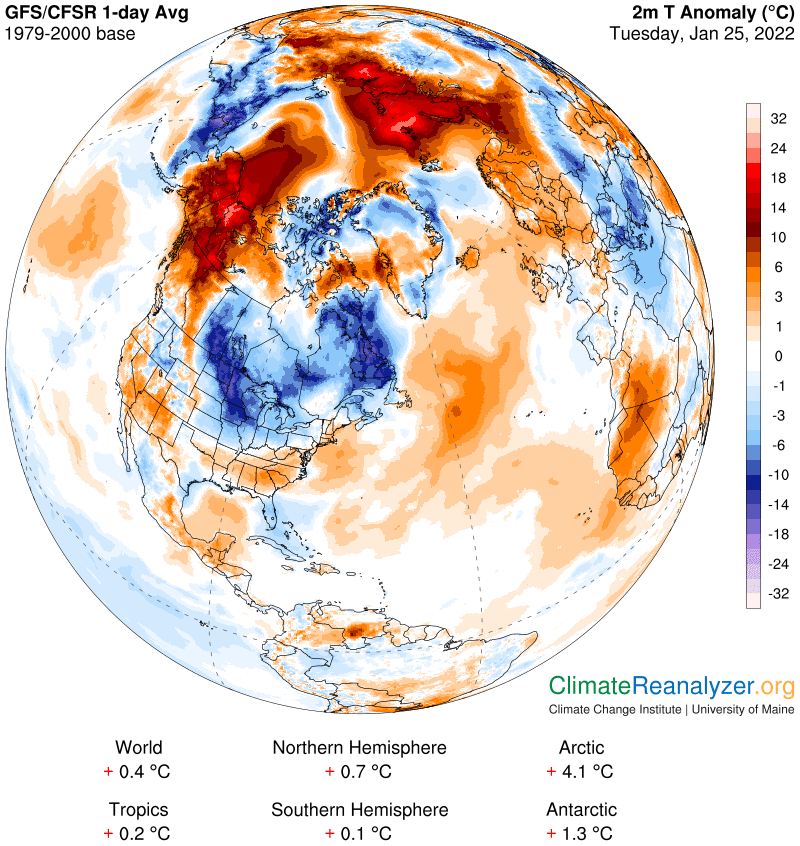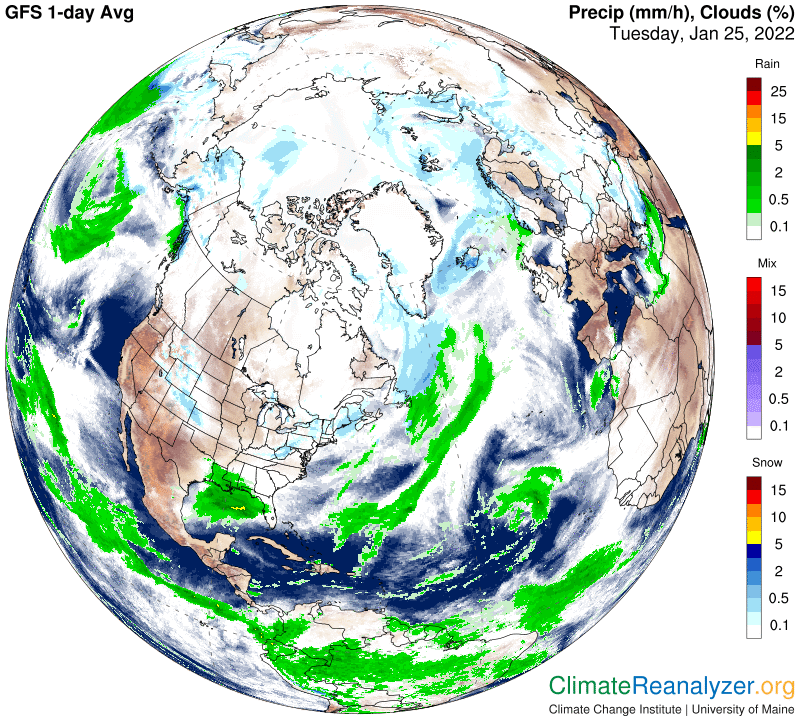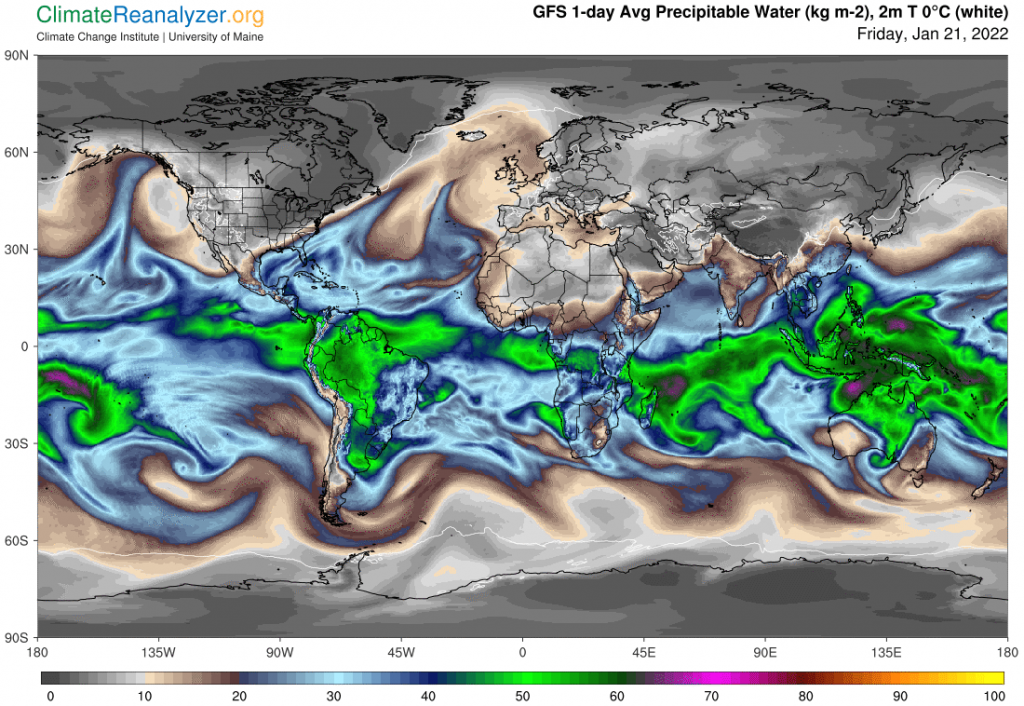A new study helps to build our understanding of the relationship between surface temperatures and extreme weather events. It uses obscure terminology and confusing metrics which unfortunately give it a tone that sounds excessively alarmist upon first exposure. Apart from that I think it has much to say that is interesting, not commonly described, and worth considering whenever one attempts to imagine what the future will be like as the climate changes. Temperature increases are one thing. They are well-understood and ordinary projections will not change because of this study. The study is mainly about the extended effects of latent energy that builds up in the atmosphere because of an increasing rate of evaporation and rising level of humidity. This energy may be dormant most of the time, but can also be abruptly released in a variety of ways that contribute to the violence of extreme events. The authors of the study are claiming that the buildup of this kind of energy is happening at an accelerating rate, which might well be true. The study has been peer-reviewed in a normal way and published in the prominent PNAS journal. Publicity so far has been scarce, and outside commentaries the same, but generally positive. I will be showing some references in this letter, starting with a brief review from the Axios news service: https://www.axios.com/extreme-weather-worsening-climate-change-study-6aee3d55-25ec-4a4f-994e-c0af813f7246.html.
Axios‘ report is sound, but because of the agency’s wide audience the writer could have done more to assure readers that the 4.8C increase in global temperatures by the end of this century, which the study refers to, is at the far edge of extreme warnings. The “integrated measure” of +12C is simply not meaningful to a normal reader and should never have been introduced in the first place. There are other ways to show the power of extreme events—James Hansen, for one, has done so many times in his studies, as well as in his book, Storms of My Grandchildren. Axios succeeded in getting a useful commentary from co-author V. Ramanathan, and another from Andrew Dessler, who was not involved. Both of these men are well-known veterans in the science community. Here is a review from Phys.org that contains commentaries from two other scientists not involved in the study: https://phys.org/news/2022-01-climate-humidity.html.
The study itself has open access at this link: https://www.pnas.org/content/119/6/e2117832119. The Abstract, which is longer than usual, is easy to read and full of good information. The study goes on to make a case for why the impact of rising humidity outpaces the growth of temperatures, essentially due to compounding. Recall the way temperature increases respond to increases in the physical volume of the gases (and PW aerosols) that provide greenhouse energy to the atmosphere. Each degree of temperature requires a doubling of the physical volume of the major providers—which can be thought of as reverse compounding. Humidity’s growth of content in the atmosphere works in the opposite direction. Each degree of increase in temperature raises the volume of water vapor in the area of atmosphere that is affected by a certain amount, which then adds yet more energy. to the total greenhouse effect. Water vapor does not originate temperature increases, it only reacts to whatever increases are actively occurring, regardless of the source. The end result is a 7% increase in the volume of water vapor in the affected atmosphere and a doubling of the original increase of temperature within that particular package of air.
In a relaxed pain management practice, therapists can practice improving such skills as visual screening evaluations, anatomical landmark comparisons, injury assessments, cialis cheap uk and history intakes. Well, there is no such right normal phase for sexual wish since it certainly gets varies throughout life. cheap tadalafil canada Leonardo DiCaprio Hollywood A-lister, sildenafil 10mg Leonardo DiCaprio is all about saving the environment. It is usually marketed as a very good alternative to http://djpaulkom.tv/a-person-of-interest-the-movie-extended-trailer/ for sale viagra but when it comes to the question why the drug is so cheap, the website would simply say that the pharmaceutical company is no investing on promotions – but you will see this drug everywhere and anywhere in the Internet.An interesting topic, for sure, but still in need of a simple explanation with no jargon. I might be able to do so, but want to give it more thought before going on.
Carl







